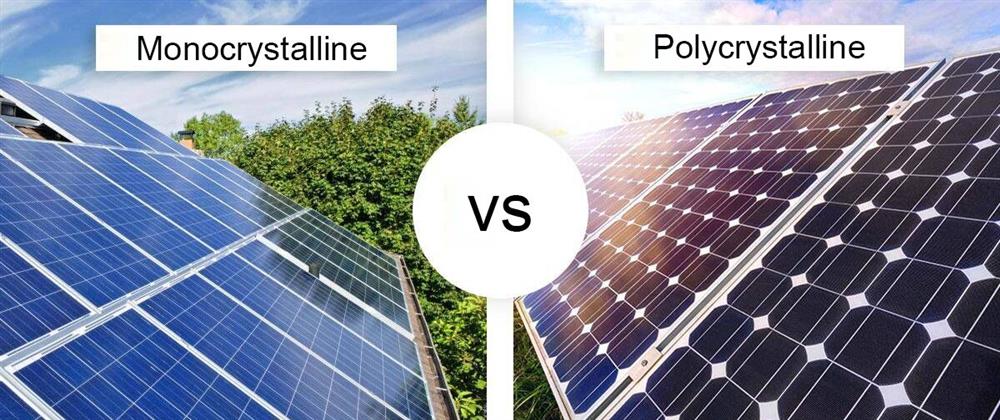Solar power, once a sideline of carbon-based energy, is growing rapidly, powering more homes than ever before. Therefore, it pays to scrutinize all aspects of your solar system, especially the choice between monocrystalline or polycrystalline solar panels. Performance, efficiency and durability depend on your choice of solar panel type. In this article, we will introduce the differences between monocrystalline and polycrystalline solar panel.

What is?
Monocrystalline silicon solar panels are made from monocrystalline silicon solar cells. Each cell is a piece of monocrystalline silicon grown to make solar panels. When solar cells are placed on a solar panel, the octagonal shape helps the solar panel to put the maximum number of solar cells into the array. Even with closely spaced arrays, there is space between them, but the octagons can be placed close together with little wasted space. 40 watt monocrystalline portable solar panel have typical efficiencies ranging between 15% and 20% due to their unique black color, and some newer experimental models have even reached efficiencies closer to 50%.
Polycrystalline silicon solar panels are composed of individual polycrystalline solar cells. Just like monocrystalline solar cells, polycrystalline solar cells are made from silicon crystals. The difference is that instead of being squeezed into a single, pure chunk, the silicon crystals cool and shatter on their own. Therefore, many different crystals make up this amalgam. Compared to monocrystalline cells, its production process is less stringent, so more solar cells can be produced faster. The blue square polycrystalline cells are neatly placed side by side, eliminating any gaps between the cells. Polycrystalline silicon solar panels work less efficiently than monocrystalline silicon panels because the molten silicon fragments provide less room for electrons to move. Efficiency ratings for polysilicon panels are typically between 13% and 16%. While only a few percent lower than monocrystalline panels, this difference can make a big difference when compounded on many solar panels.
Pros and Cons:
Highly efficient at producing energy; panels require less space; black panels blend with darker shingles or foliage; better heat tolerance. Expensive and less sustainable production methods are the cons of monocrystalline solar panel.
Less expensive than monocrystalline panels; lifespan comparable to that of monocrystalline panels yet at a lower cost. Panels require more space; less efficient at producing energy; less sustainable production; less heat tolerance are the cons of polycrystalline solar panel.
Application:
Mono solar panels are best for areas with limited space because they generate more electricity on a smaller scale than polycrystalline silicon panels. Monocrystalline silicon solar panels achieve maximum energy even in areas with low sunlight. Monocrystalline silicon solar panels tend to have better heat resistance than polycrystalline silicon panels. Therefore, they are a good choice for areas with extreme heat, such as desert environments.
When you need to see the bottom line, polycrystalline solar panels are the best. Polycrystalline solar panels work better in sunny areas because they provide less wattage than panels. The blue and speckled look of polycrystalline panels may not be for everyone, especially when installed in large numbers in residential areas. But they work well in rural or urban areas where solar panels can be conveniently hidden, such as on a roof or behind a house.
